While it may still be late winter, this is a great time to start prepping the bicycle for the riding seasons ahead. Even for me, the consummate fair-weather rider. I’ve already had the bike professionally tuned. I’ve also replaced the old worn-out tires with more puncture resistant ones. The chain is lubed, and the accessories are re-installed. But there is one more thing I need to do.
And that is to replace the clipless pedals with flat pedals.
I’ll explain why shortly, but first I want to go over the pros and cons of bike shoes and pedals. But first, let me provide a quick history lesson on “clipless” pedals, and why the term “clipless” is so confusing.
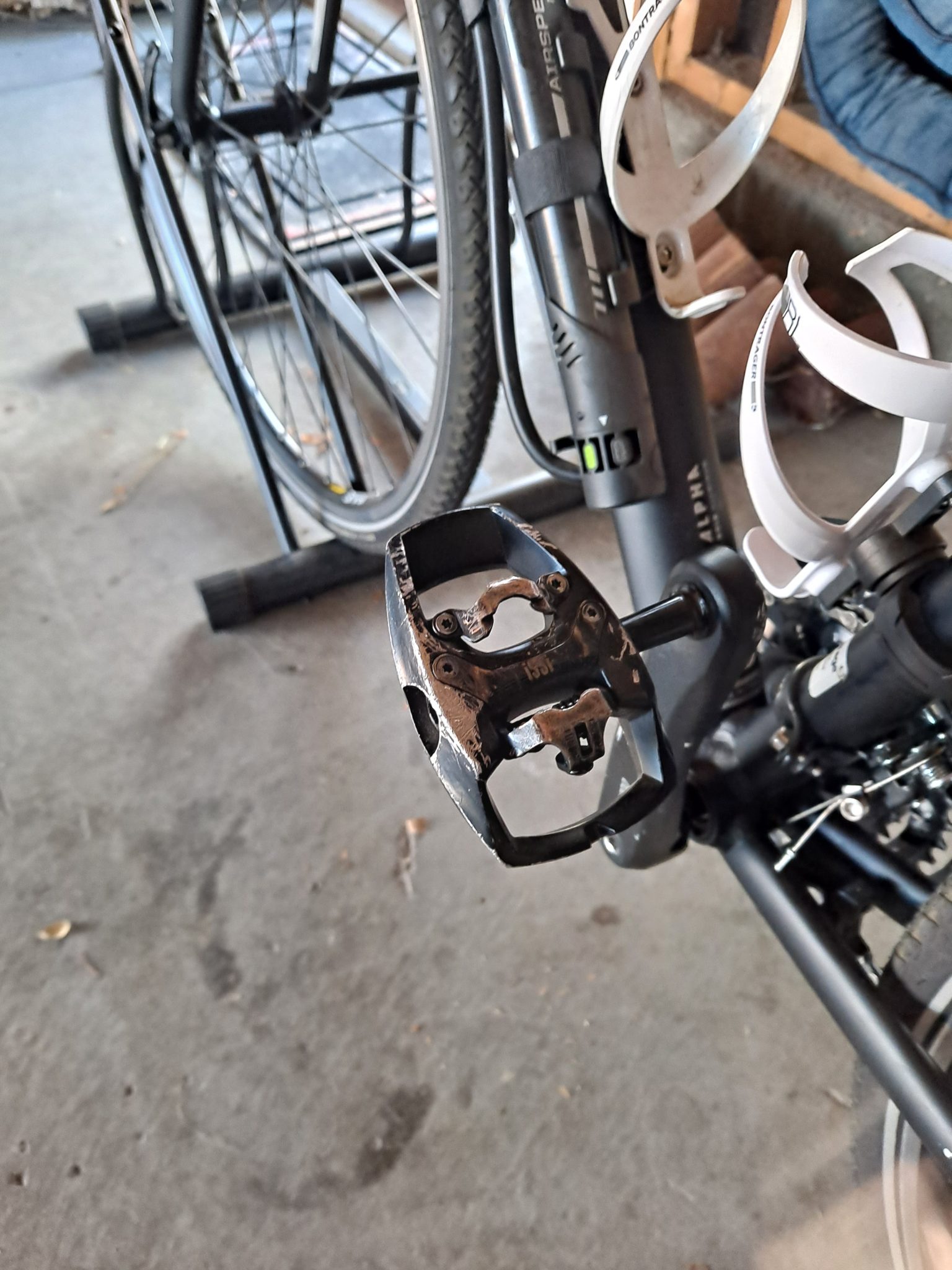
Pedal history
Way back in the stone ages of bicycling, pedals were just flat pieces of metal. The major downside to such pedals, especially for racers, is that it was hard to keep the foot in contact with the pedal. Especially in wet conditions. The riders’ feet just kept slipping of the pedal. Then sometime in the 1890s, somebody came up with brilliant idea of attaching “baskets” to the pedal to keep the foot strapped down so it would no longer slip off the pedal. These were called toe-clips.
Something like this:
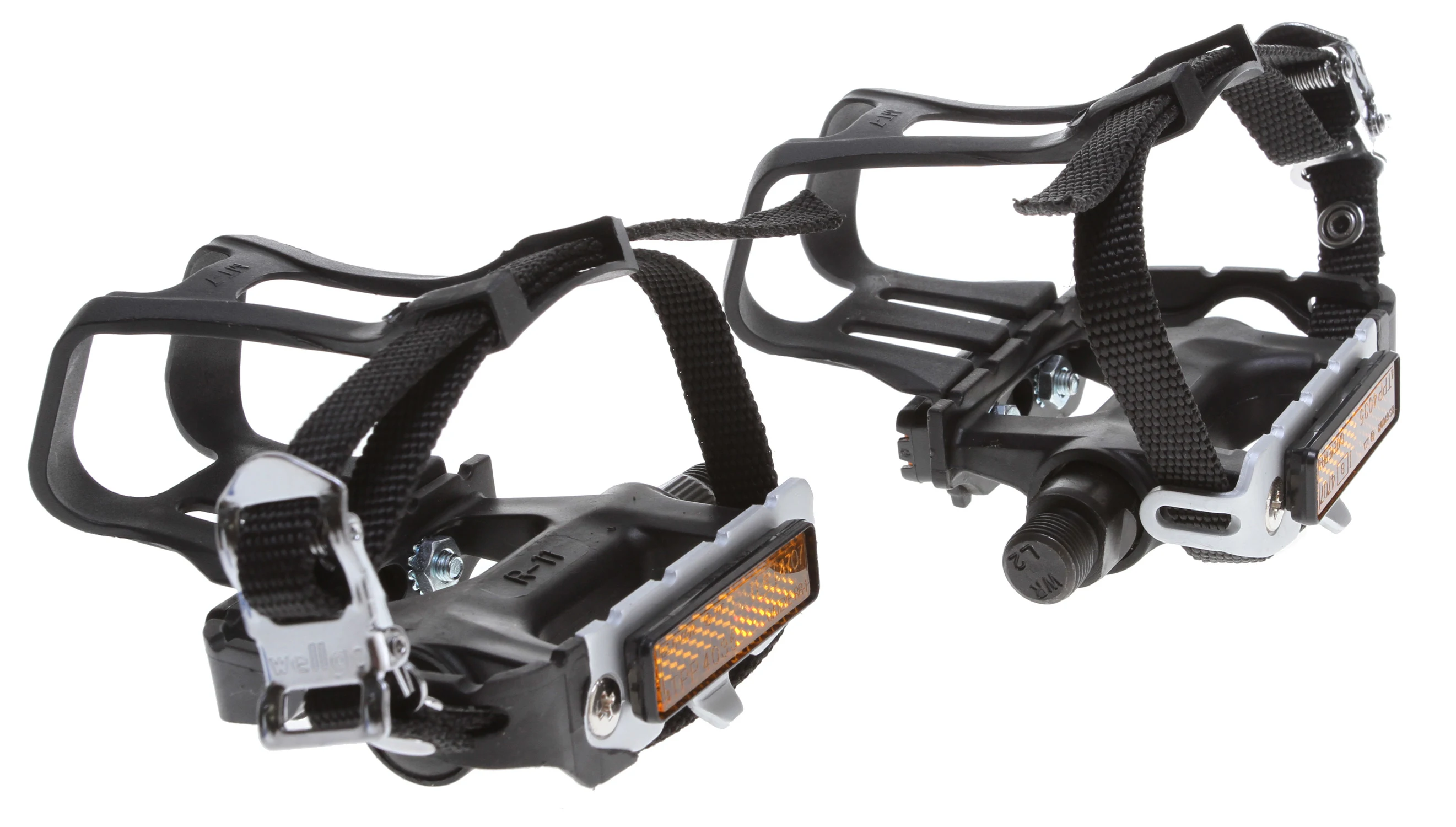
Toe-clips did the job but were not an ideal solution to the problem. For one, they are uncomfortable (at least I found them to be so) and they were dangerous, because they are hard to get your feet out of in the event of a sudden stop or emergency situation.
Eventually, another bright-eyed genius came up the idea of making pedals with a spring-loaded bracket that a rider would clip a cleat that is mounted on the shoe into. Thus, the confusing term “clipless pedal” was created: for even though you snap or clip your shoes into the pedal, you are no longer using toe-clips.
Make sense?
Pros and Cons of bicycle shoes and “clipless” pedals
Ok, now before I go on, I want to state that these pros and cons are in relation to how I ride a bike. There are a vast number of bicyclists who would rather die than give up their bike shoes and clipless pedals. More power to them. But in my opinion, most bicyclist do not need bicycling shoes. For the vast majority of us, flat pedals work just fine.
Allright, with that out of the way, let’s look at the pros and cons of clipless pedals.
Pros of clipless pedals over flat pedals
Bicycling pedals are more efficient than flat pedals: there is a myth about clipless pedals that just will not die. The myth goes that when using clipless pedals, the rider can “pull” the pedal along on the upstroke as he pedals, thus creating more power. This myth has been debunked numerous times. (Stop pulling up on your pedals: the myth of the upstroke – BikeRadar).
However, there have been studies that suggest that using clipless pedals can increase efficiency by up to 10% when climbing hills. I have noticed that tackling hills does seem a little easier when I use clipless pedals. How much of that, however, is actual improved efficiency and how much is it placebo effect?
Shoes stay on the pedals: no placebo effect here. There is no question that my feet do not slip off the pedals. Ever. Even if I want them to. More than once I’ve had difficulties getting out of the pedals when coming to a stop, leading the humiliating spectacle of me falling over while my feet are firmly attached to the bike.
Cons of clipless over flat pedals
They are expensive: Bicycle shoes and pedals are very expensive and impractical; you can only use the shoes for bicycling. You do not throw on a pair of bike shoes to go to the store or mow the lawn. Especially road bike shoes (I’ll explain why shortly). A decent pair of bike shoes is going to set you back at least a hundred dollars. Obviously, better shoes are going to more expensive.
A cheap set of bike pedals will set you back at least $30, but you get what you pay for. A cheap set is not going to last very long. Expect to shell out close to another hundred for a good pair of pedals.
Contrast that to your standard flat pedals. The one pictured below came with my hybrid bike. You can find a set just like this on Amazon for around six to 10 dollars, and they will last practically forever.
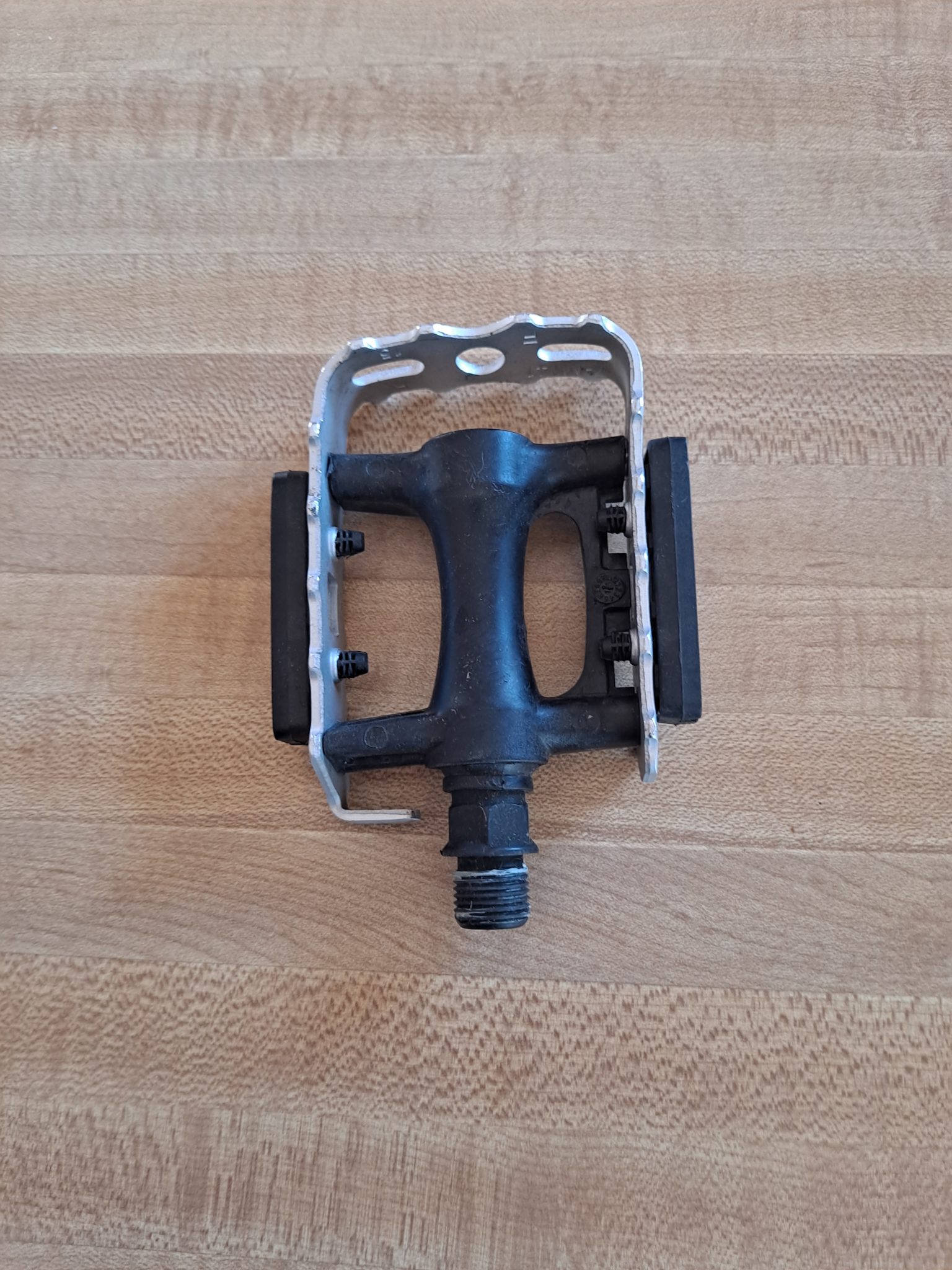
The shoes tend to be uncomfortable: my regular street shoes are an 11.5 wide. Good luck finding bicycle shoes for such large ant-stompers. After a long and thorough search for a pair of bicycle shoes in clown shoe size, I ended up plunking down a $100 for a shoe that claimed to be the roomiest on the market.
These shoes still crush my feet.
Kind of hard to get motivated to go riding when you know your feet will be sore at the end.
Danger of overuse injuries and falling: A couple of summers ago, when I tried to stop to take some pictures of some wildlife, my foot inadvertently snapped back into the pedal and I fell into a culvert. (Glorious day for a bicycle ride (mrvintageman.com). I jacked myself up pretty good. I had a bruise on my bicep, from where the end of the handlebar jabbed it, that lasted for over a week.
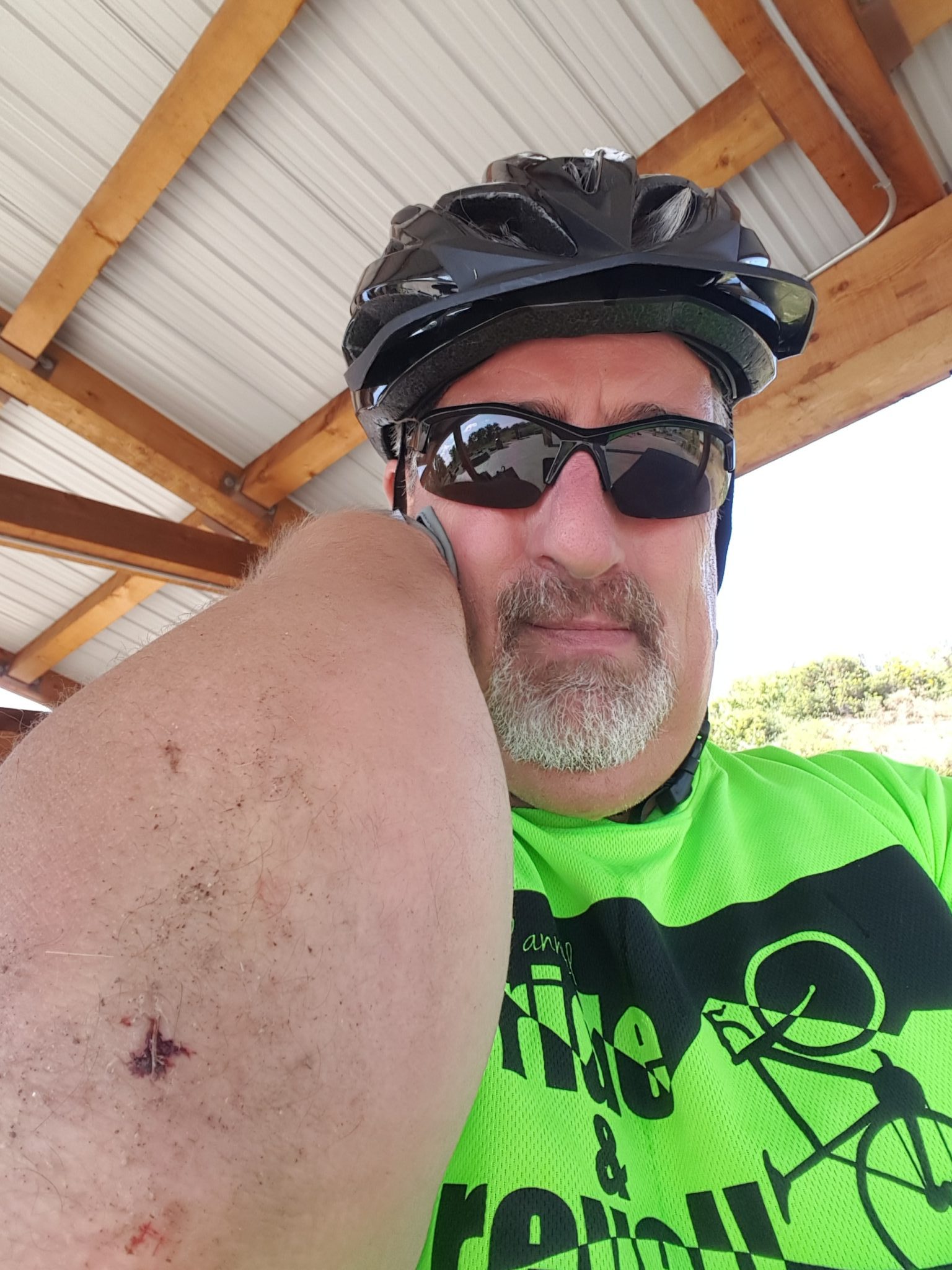
I am prone to developing tendonitis. I’ve had all of the following, sometimes more than once: plantar fasciitis, tarsal tunnel syndrome (similar to carpal tunnel, but in the ankle), iliotibial band syndrome and forearm tendonitis. Tendonitis sucks because it takes fricken forever to heal. Thus, I do have some concerns about having my foot locked into one position while I pedal several thousand times on a ride. Seems to me to be a damn fine way of developing an overuse injury in my foot or lower leg.
They can be confusing: there are two kinds of bicycle shoes: road shoes and mountain bike shoes. The pedals for these two types of riding are radically different. For example, road shoes have an extremely hard and slick sole, and they use a large triangular cleat. The hard sole is supposed to reduce foot flexion on the pedals, and the large triangle cleat provides more efficiency on the pedal stroke. Combined, these features are supposed to provide the rider more power and speed. They are also almost impossible to walk on when the rider gets off the bike.
Then there are the mountain bike shoes. The cleats on these shoes are much smaller and are recessed under a softer sole. The smaller cleat allows the rider to snap out of the pedal easier than road shoes, and the soft sole allows the rider to get off the bike and walk. Useful for when the bike gets bogged down in mud or sand.
I use mountain bike shoes and pedals because I like to get off my bike and explore. The pedals shown in the picture at the top of the page are an example of MTB pedals. Below is what the cleat for a MTB shoe looks like. Notice the Vibram hiking sole.
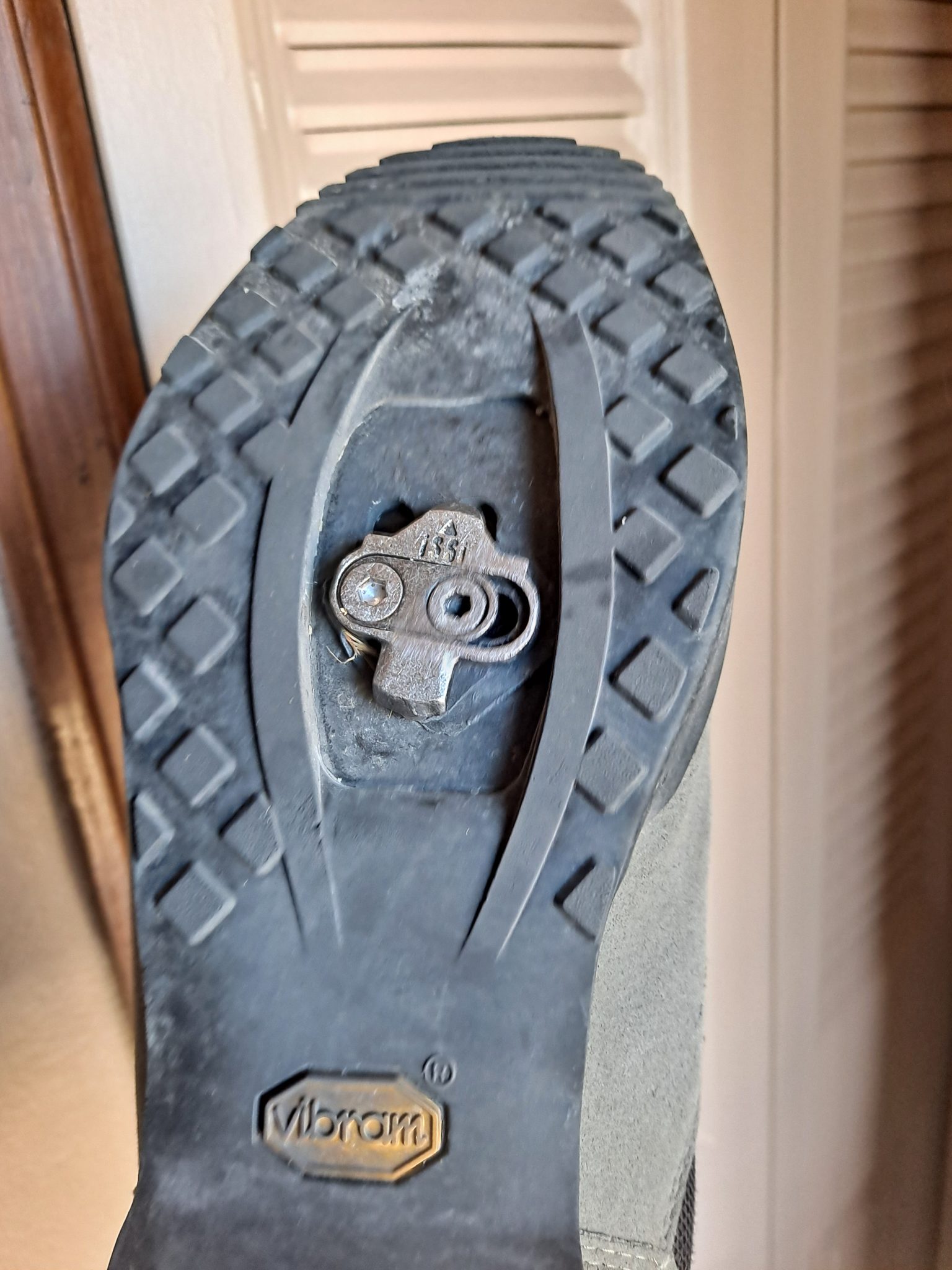
Replacing my pedals
Alright, so now that I’ve gone over the pros and cons of bicycle shoes (as I see them), I’m now going to explain why I am reverting back to flat pedals. First off though, take look at the pedal below. These are the same pedals as the ones in the picture at the top of the post, yet they look a little different. This type of pedal is known as a dual-sided pedal. They have two different faces.
One side is for snapping the cleat into, while the other side is basically a flat pedal. Most bicyclists who use clipless pedals have the locking mechanism on both sides. I went with this type so I could use the flat side when not riding hills.
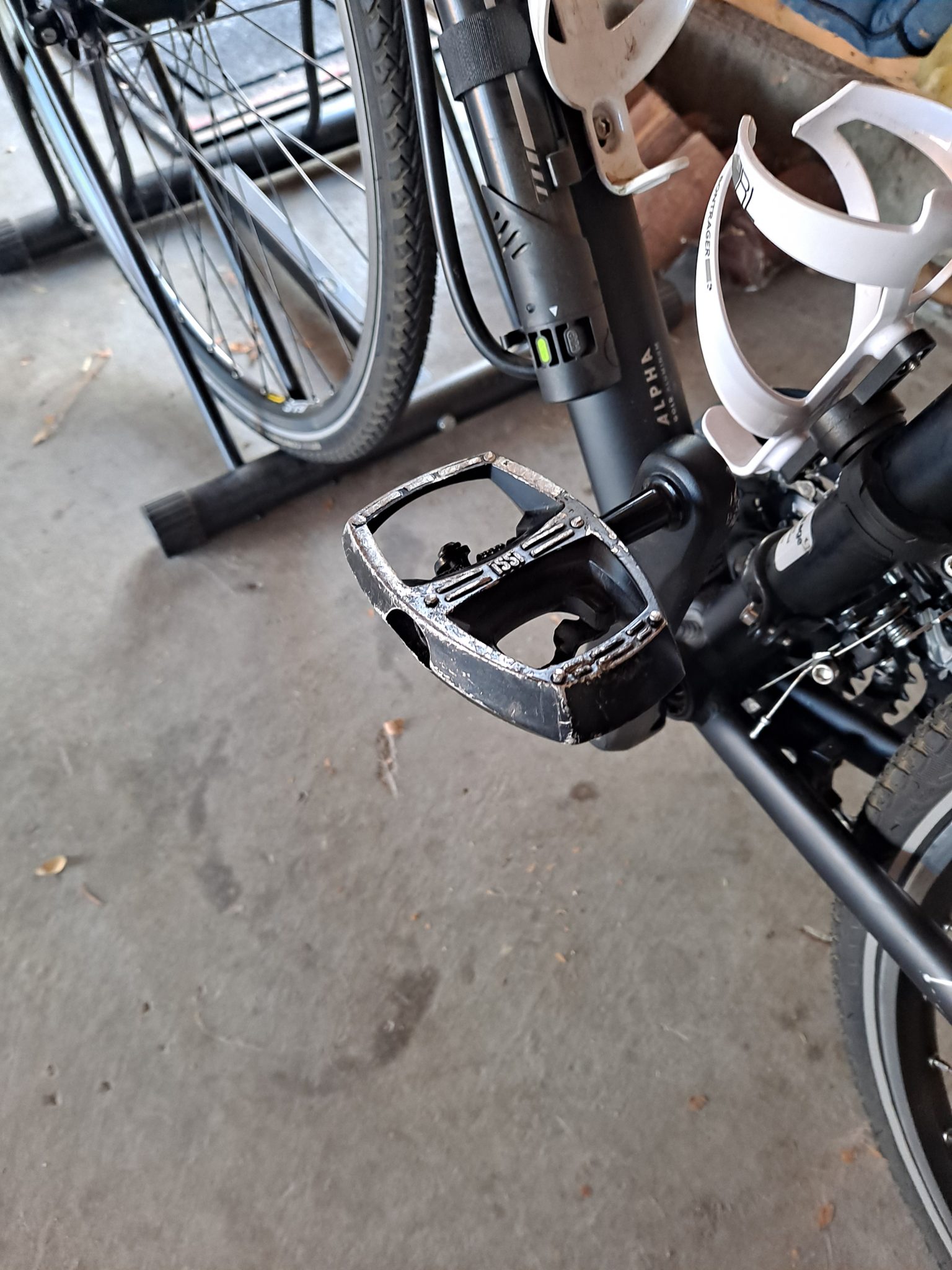
Which led me to wonder: why am I using an uncomfortable clipless pedal when I only use the clipless side when I’m on a hill? Especially since the flat pedal side is so tiny my big ol’ feet tend to slide off them?
I had no good answers.
And that, my friends, is I why I am reverting back to flat pedals. Because for me they just seem to make more sense.
The pedals
With the decision made, I chose not to put the old pedals that came with the bike back on. I splurged on an upgrade, and I did so for a couple of reasons.
One, the new pedals are flatter and have more surface area. This means I can apply force more evenly on the pedal, hopefully making my pedaling a bit more efficient.
Two, these suckers are much wider than my old flat pedals, which should translate into more support for my big feet. Plus, the new pedals have tiny “nails” in them, which will hopefully keep my feet from slipping off.
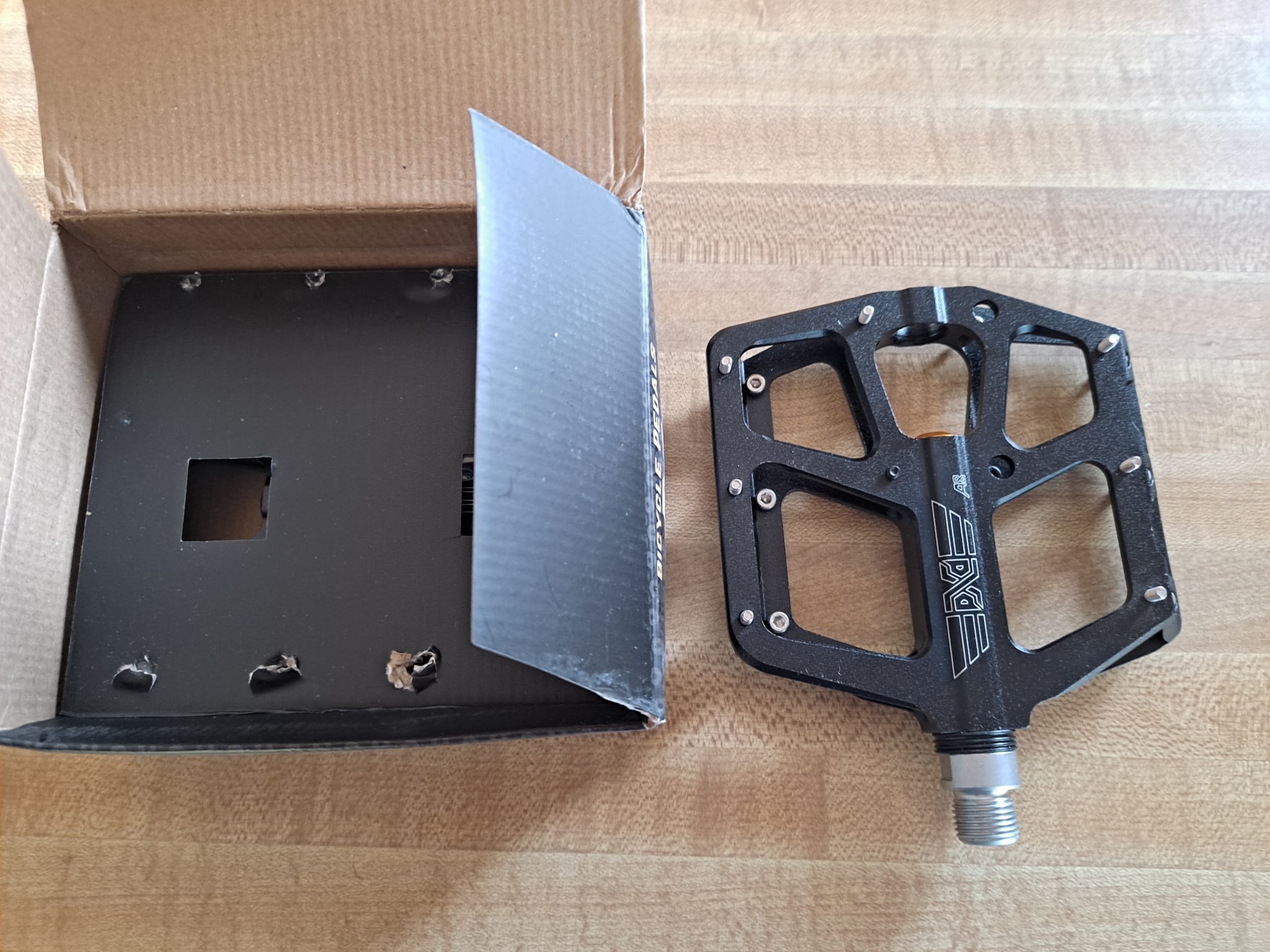
Now, I just need for the weather to improve so I can start riding and check them out. I hope they work, because after this post, there is no way I will ever admit in print that I was wrong!

